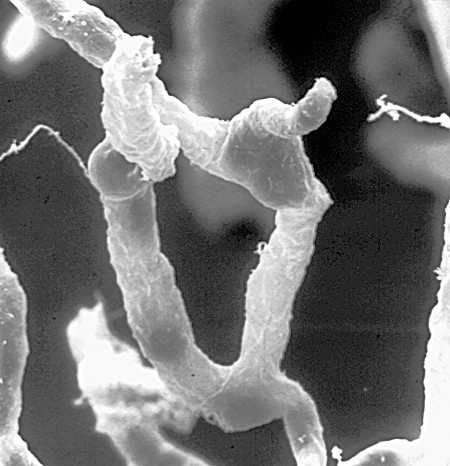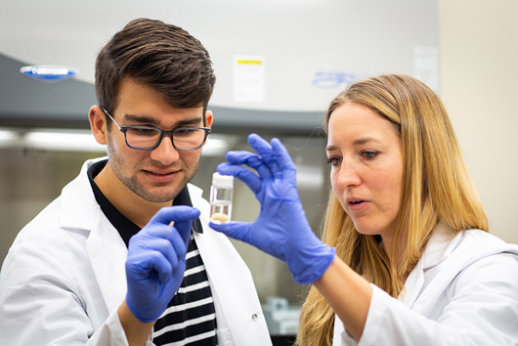 A network of capillaries supplies brain cells with nutrients. Tight seals in their walls keep blood toxins—and many beneficial drugs—out of the brain. Credit: Dan Ferber, PLOS Biol 2007 Jun; (5)6:E169. CC by 2.5
A network of capillaries supplies brain cells with nutrients. Tight seals in their walls keep blood toxins—and many beneficial drugs—out of the brain. Credit: Dan Ferber, PLOS Biol 2007 Jun; (5)6:E169. CC by 2.5
The blood-brain barrier—the ultra-tight seal in the walls of the brain’s capillaries—is an important part of the body’s defense system. It keeps invaders and other toxins from entering the human brain by screening out dangerous molecules. But the intricate workings of this extremely effective barrier also make it challenging to design therapeutics that would help us. And as it turns out, getting a drug across the blood-brain barrier is only half the battle. Once it’s across, the drug needs to effectively target the right cells in the brain tissue. With this in mind, it’s no surprise that challenges this complex are solved through collaboration among scientists from several different specialties.
Elizabeth Nance, an assistant professor of chemical engineering at the University of Washington in Seattle and a recent recipient of the Presidential Early Career Award for Scientists and Engineers (PECASE), focuses her research on understanding the barriers in the brain and other cell- and tissue-based barriers in the body to see how nanoparticles interact with them. Her lab uses nanoparticles to package therapies that will treat newborn brain injury, which can occur when the brain loses oxygen and blood flow, often during or immediately prior to delivery. This damage can lead to cerebral palsy, developmental delays, or sometimes death. Early interventions for newborn brain injury can be valuable, but they need to target specific, injured cells without harming healthy ones.
As part of Nance’s research, supported by the Maximizing Investigators’ Research Award (MIRA), her lab identifies the extent of blood-brain barrier disruption and changes in cell behavior before testing a therapy. By understanding this information, scientists can time the therapy’s delivery to take advantage of these changes. This allows more of the therapy to enter the brain and increases the chance of penetration.
 Nance working in her lab with an undergraduate researcher. Credit: Nance Lab.
Nance working in her lab with an undergraduate researcher. Credit: Nance Lab.
To do this well requires collaborating with a multidisciplinary team from different fields. Formally trained as a chemical engineer, Nance says that she and those in her lab need to feel comfortable working in biological systems and with clinicians and scientists outside of engineering.
She challenges students and colleagues to read literature and collaborate beyond their own fields. In doing so, they can continually build a full picture of the problem at hand, one puzzle piece at a time, to make the most informed decision possible. “We need to do a better job in all graduate programs to prepare students how best to learn the language and use the language of a field that’s not their own,” she says. “This skill allows you to better sort through papers outside your field, have conversations with collaborators to explore ideas, or see if the information gathered is enough to take productive action.”
For Nance, the PECASE recognition was exciting and validating for her multidisciplinary approach. The ideas for her research came from her lab’s diverse collaborators, making the receipt of the award very much a group effort.
Nance’s research is supported by NIGMS grant 1R35GM124677.

